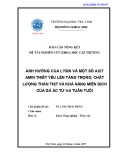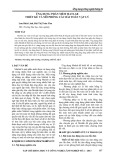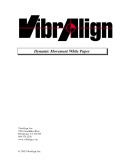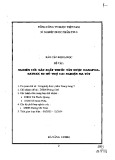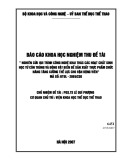
RESEARCH Open Access
Comparison of regression models for estimation
of isometric wrist joint torques using surface
electromyography
Amirreza Ziai and Carlo Menon
*
Abstract
Background: Several regression models have been proposed for estimation of isometric joint torque using surface
electromyography (SEMG) signals. Common issues related to torque estimation models are degradation of model
accuracy with passage of time, electrode displacement, and alteration of limb posture. This work compares the
performance of the most commonly used regression models under these circumstances, in order to assist
researchers with identifying the most appropriate model for a specific biomedical application.
Methods: Eleven healthy volunteers participated in this study. A custom-built rig, equipped with a torque sensor,
was used to measure isometric torque as each volunteer flexed and extended his wrist. SEMG signals from eight
forearm muscles, in addition to wrist joint torque data were gathered during the experiment. Additional data were
gathered one hour and twenty-four hours following the completion of the first data gathering session, for the
purpose of evaluating the effects of passage of time and electrode displacement on accuracy of models. Acquired
SEMG signals were filtered, rectified, normalized and then fed to models for training.
Results: It was shown that mean adjusted coefficient of determination (R2
a)values decrease between 20%-35% for
different models after one hour while altering arm posture decreased mean R2
avalues between 64% to 74% for
different models.
Conclusions: Model estimation accuracy drops significantly with passage of time, electrode displacement, and
alteration of limb posture. Therefore model retraining is crucial for preserving estimation accuracy. Data resampling
can significantly reduce model training time without losing estimation accuracy. Among the models compared,
ordinary least squares linear regression model (OLS) was shown to have high isometric torque estimation accuracy
combined with very short training times.
Background
SEMG is a well-established technique to non-invasively
record the electrical activity produced by muscles. Sig-
nals recorded at the surface of the skin are picked up
from all the active motor units in the vicinity of the
electrode [1]. Due to the convenience of signal acquisi-
tion from the surface of the skin, SEMG signals have
been used for controlling prosthetics and assistive
devices [2-7], speech recognition systems [8], and also
as a diagnostic tool for neuromuscular diseases [9].
However, analysis of SEMG signals is complicated due
to nonlinear behaviour of muscles [10], as well as sev-
eral other factors. First, cross talk between the adjacent
muscles complicates recording signals from a muscle in
isolation [11]. Second, signal behaviour is very sensitive
to the position of electrodes [12]. Moreover, even with a
fixed electrode position, altering limb positions have
been shown to have substantial impact on SEMG signals
[13]. Other issues, such as inherent noise in signal
acquisition equipment, ambient noise, skin temperature,
and motion artefact can potentially deteriorate signal
quality [14,15].
The aforementioned issues necessitate utilization of
signal processing and statistical modeling for estimation
of muscle forces and joint torques based on SEMG
* Correspondence: cmenon@sfu.ca
MENRVA Research Group, School of Engineering Science, Faculty of Applied
Science, Simon Fraser University, 8888 University Drive, Burnaby, BC, V5A 1S6,
Canada
Ziai and Menon Journal of NeuroEngineering and Rehabilitation 2011, 8:56
http://www.jneuroengrehab.com/content/8/1/56 JNERJOURNAL OF NEUROENGINEERING
AND REHABILITATION
© 2011 Ziai and Menon; licensee BioMed Central Ltd. This is an Open Access article distributed under the terms of the Creative
Commons Attribution License (http://creativecommons.org/licenses/by/2.0), which permits unrestricted use, distribution, and
reproduction in any medium, provided the original work is properly cited.





